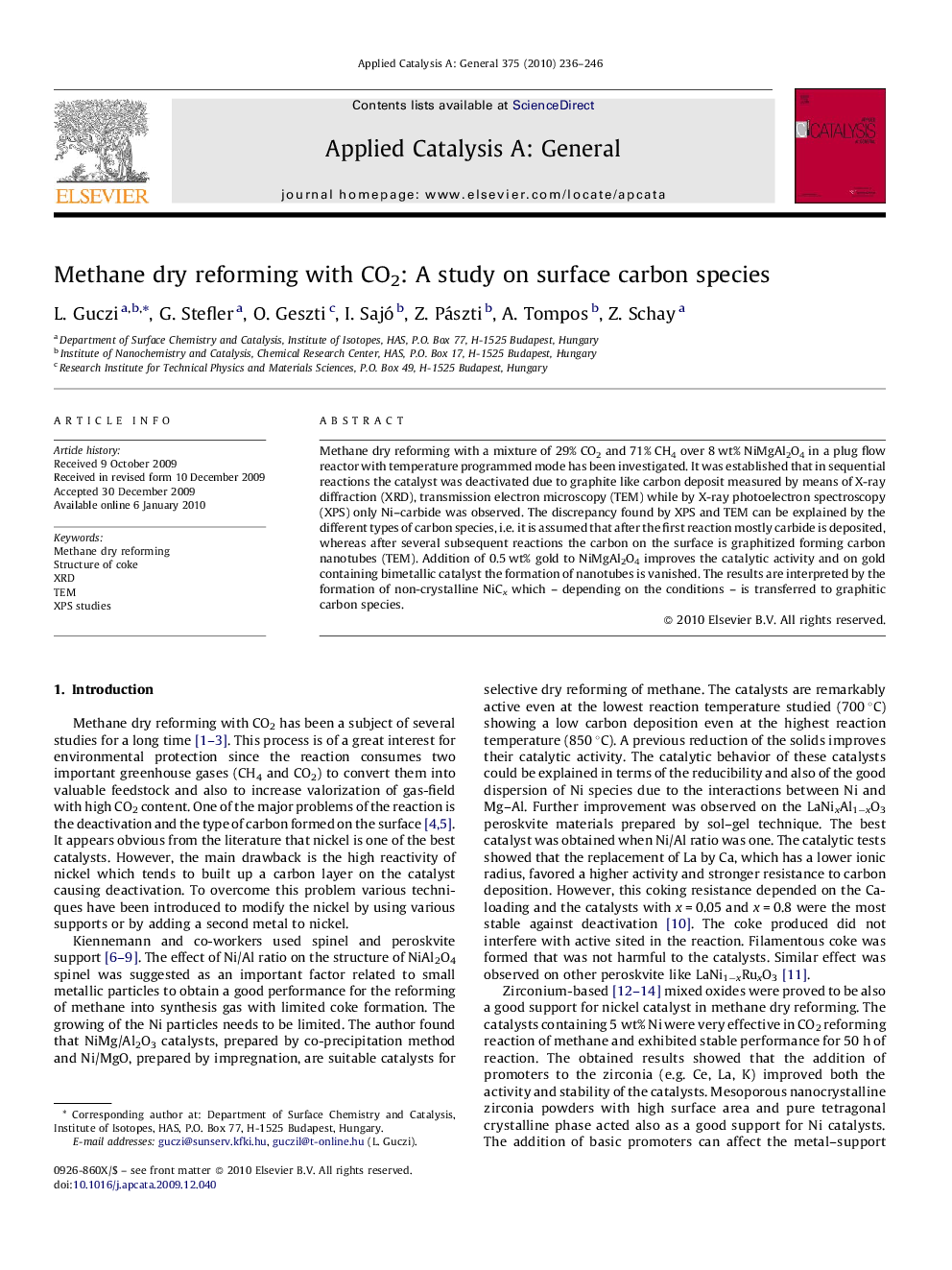| Article ID | Journal | Published Year | Pages | File Type |
|---|---|---|---|---|
| 42477 | Applied Catalysis A: General | 2010 | 11 Pages |
Methane dry reforming with a mixture of 29% CO2 and 71% CH4 over 8 wt% NiMgAl2O4 in a plug flow reactor with temperature programmed mode has been investigated. It was established that in sequential reactions the catalyst was deactivated due to graphite like carbon deposit measured by means of X-ray diffraction (XRD), transmission electron microscopy (TEM) while by X-ray photoelectron spectroscopy (XPS) only Ni–carbide was observed. The discrepancy found by XPS and TEM can be explained by the different types of carbon species, i.e. it is assumed that after the first reaction mostly carbide is deposited, whereas after several subsequent reactions the carbon on the surface is graphitized forming carbon nanotubes (TEM). Addition of 0.5 wt% gold to NiMgAl2O4 improves the catalytic activity and on gold containing bimetallic catalyst the formation of nanotubes is vanished. The results are interpreted by the formation of non-crystalline NiCx which – depending on the conditions – is transferred to graphitic carbon species.
Graphical abstractIn methane dry reforming on Ni/MgAl2O4 and Au-Ni/MgAl2O4 catalyst after the first reaction most of the carbon deposited is carbide (XPS), whereas after several subsequent reactions the carbon on the surface is graphitized forming carbon nanotubes (TEM). Addition of gold drastically reduces the formation of graphite and CMWNT and affect the activity of Ni.Figure optionsDownload full-size imageDownload high-quality image (137 K)Download as PowerPoint slide
